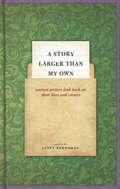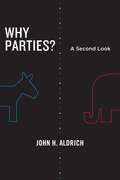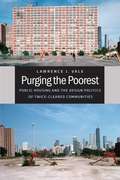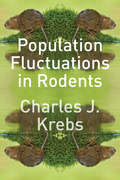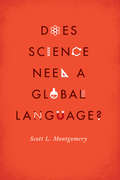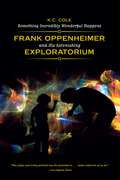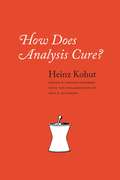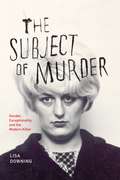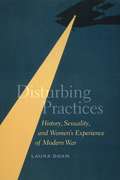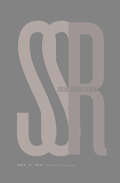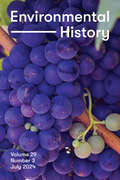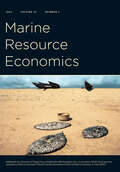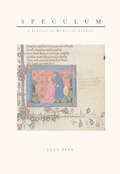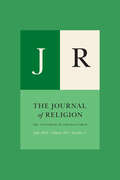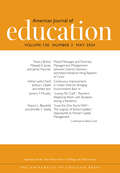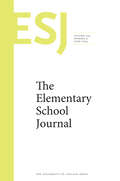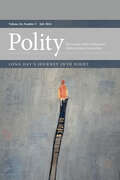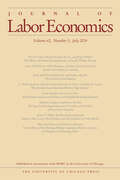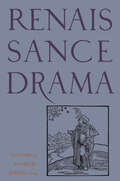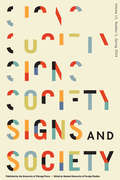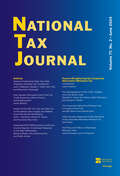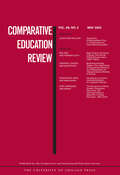- Table View
- List View
A Story Larger than My Own: Women Writers Look Back on Their Lives and Careers
by Janet BurrowayIn 1955, Maxine Kumin submitted a poem to the Saturday Evening Post. “Lines on a Half-Painted House” made it into the magazine—but not before Kumin was asked to produce, via her husband’s employer, verification that the poem was her original work. Kumin, who went on to win the Pulitzer Prize for poetry, was part of a groundbreaking generation of women writers who came of age during the midcentury feminist movement. By challenging the status quo and ultimately finding success for themselves, they paved the way for future generations of writers. In A Story Larger than My Own, Janet Burroway brings together Kumin, Julia Alvarez, Jane Smiley, Erica Jong, and fifteen other accomplished women of this generation to reflect on their writing lives. The essays and poems featured in this collection illustrate that even writers who achieve critical and commercial success experience a familiar pattern of highs and lows over the course of their careers. Along with success comes the pressure to sustain it, as well as a constant search for subject matter, all too frequent crises of confidence, the challenges of a changing publishing scene, and the difficulty of combining writing with the ordinary stuff of life—family, marriage, jobs. The contributors, all now over the age of sixty, also confront the effects of aging, with its paradoxical duality of new limitations and newfound freedom. Taken together, these stories offer advice from experience to writers at all stages of their careers and serve as a collective memoir of a truly remarkable generation of women.
Still: American Silent Motion Picture Photography
by David S. ShieldsThe success of movies like The Artist and Hugo recreated the wonder and magic of silent film for modern audiences, many of whom might never have experienced a movie without sound. But while the American silent movie was one of the most significant popular art forms of the modern age, it is also one that is largely lost to us, as more than eighty percent of silent films have disappeared, the victims of age, disaster, and neglect. We now know about many of these cinematic masterpieces only from the collections of still portraits and production photographs that were originally created for publicity and reference. Capturing the beauty, horror, and moodiness of silent motion pictures, these images are remarkable pieces of art in their own right. In the first history of still camera work generated by the American silent motion picture industry, David S. Shields chronicles the evolution of silent film aesthetics, glamour, and publicity, and provides unparalleled insight into this influential body of popular imagery. Exploring the work of over sixty camera artists, Still recovers the stories of the photographers who descended on early Hollywood and the stars and starlets who sat for them between 1908 and 1928. Focusing on the most culturally influential types of photographs—the performer portrait and the scene still—Shields follows photographers such as Albert Witzel and W. F. Seely as they devised the poses that newspapers and magazines would bring to Americans, who mimicked the sultry stares and dangerous glances of silent stars. He uncovers scene shots of unprecedented splendor—visions that would ignite the popular imagination. And he details how still photographs changed the film industry, whose growing preoccupation with artistry in imagery caused directors and stars to hire celebrated stage photographers and transformed cameramen into bankable names. Reproducing over one hundred and fifty of these gorgeous black-and-white photographs, Still brings to life an entire long-lost visual culture that a century later still has the power to enchant.
Why Parties?: A Second Look (Chicago Studies In American Politics Ser.)
by John H. AldrichSince its first appearance fifteen years ago, Why Parties? has become essential reading for anyone wishing to understand the nature of American political parties. In the interim, the party system has undergone some radical changes. In this landmark book, now rewritten for the new millennium, John H. Aldrich goes beyond the clamor of arguments over whether American political parties are in resurgence or decline and undertakes a wholesale reexamination of the foundations of the American party system.Surveying critical episodes in the development of American political parties—from their formation in the 1790s to the Civil War—Aldrich shows how they serve to combat three fundamental problems of democracy: how to regulate the number of people seeking public office, how to mobilize voters, and how to achieve and maintain the majorities needed to accomplish goals once in office. Aldrich brings this innovative account up to the present by looking at the profound changes in the character of political parties since World War II, especially in light of ongoing contemporary transformations, including the rise of the Republican Party in the South, and what those changes accomplish, such as the Obama Health Care plan. Finally, Why Parties? A Second Look offers a fuller consideration of party systems in general, especially the two-party system in the United States, and explains why this system is necessary for effective democracy.
Purging the Poorest: Public Housing and the Design Politics of Twice-Cleared Communities (Historical Studies Of Urban America Ser.)
by Lawrence J. ValeThe building and management of public housing is often seen as a signal failure of American public policy, but this is a vastly oversimplified view. In Purging the Poorest, Lawrence J. Vale offers a new narrative of the seventy-five-year struggle to house the “deserving poor.”In the 1930s, two iconic American cities, Atlanta and Chicago, demolished their slums and established some of this country’s first public housing. Six decades later, these same cities also led the way in clearing public housing itself. Vale’s groundbreaking history of these “twice-cleared” communities provides unprecedented detail about the development, decline, and redevelopment of two of America’s most famous housing projects: Chicago’s Cabrini-Green and Atlanta’s Techwood /Clark Howell Homes. Vale offers the novel concept of design politics to show how issues of architecture and urbanism are intimately bound up in thinking about policy. Drawing from extensive archival research and in-depth interviews, Vale recalibrates the larger cultural role of public housing, revalues the contributions of public housing residents, and reconsiders the role of design and designers.
Population Fluctuations in Rodents
by Charles J. KrebsHow did rodent outbreaks in Germany help to end World War I? What caused the destructive outbreak of rodents in Oregon and California in the late 1950s, the large population outbreak of lemmings in Scandinavia in 2010, and the great abundance of field mice in Scotland in the spring of 2011? Population fluctuations, or outbreaks, of rodents constitute one of the classic problems of animal ecology, and in Population Fluctuations in Rodents, Charles J. Krebs sifts through the last eighty years of research to draw out exactly what we know about rodent outbreaks and what should be the agenda for future research. Krebs has synthesized the research in this area, focusing mainly on the voles and lemmings of the Northern Hemisphere—his primary area of expertise—but also referring to the literature on rats and mice. He covers the patterns of changes in reproduction and mortality and the mechanisms that cause these changes—including predation, disease, food shortage, and social behavior—and discusses how landscapes can affect population changes, methodically presenting the hypotheses related to each topic before determining whether or not the data supports them. He ends on an expansive note, by turning his gaze outward and discussing how the research on rodent populations can apply to other terrestrial mammals. Geared toward advanced undergraduate students, graduate students, and practicing ecologists interested in rodent population studies, this book will also appeal to researchers seeking to manage rodent populations and to understand outbreaks in both natural and urban settings—or, conversely, to protect endangered species.
Does Science Need a Global Language?: English and the Future of Research
by Scott L. MontgomeryIn early 2012, the global scientific community erupted with news that the elusive Higgs boson had likely been found, providing potent validation for the Standard Model of how the universe works. Scientists from more than one hundred countries contributed to this discovery—proving, beyond any doubt, that a new era in science had arrived, an era of multinationalism and cooperative reach. Globalization, the Internet, and digital technology all play a role in making this new era possible, but something more fundamental is also at work. In all scientific endeavors lies the ancient drive for sharing ideas and knowledge, and now this can be accomplished in a single tongue— English. But is this a good thing? In Does Science Need a Global Language?, Scott L. Montgomery seeks to answer this question by investigating the phenomenon of global English in science, how and why it came about, the forms in which it appears, what advantages and disadvantages it brings, and what its future might be. He also examines the consequences of a global tongue, considering especially emerging and developing nations, where research is still at a relatively early stage and English is not yet firmly established. Throughout the book, he includes important insights from a broad range of perspectives in linguistics, history, education, geopolitics, and more. Each chapter includes striking and revealing anecdotes from the front-line experiences of today’s scientists, some of whom have struggled with the reality of global scientific English. He explores topics such as student mobility, publication trends, world Englishes, language endangerment, and second language learning, among many others. What he uncovers will challenge readers to rethink their assumptions about the direction of contemporary science, as well as its future.
Something Incredibly Wonderful Happens: Frank Oppenheimer and His Astonishing Exploratorium
by K.C. ColeHow do we reclaim our innate enchantment with the world? And how can we turn our natural curiosity into a deep, abiding love for knowledge? Frank Oppenheimer, the younger brother of the physicist J. Robert Oppenheimer, was captivated by these questions, and used his own intellectual inquisitiveness to found the Exploratorium, a powerfully influential museum of human awareness in San Francisco, that encourages play, creativity, and discovery—all in the name of understanding. In this elegant biography, K. C. Cole investigates the man behind the museum with sharp insight and deep sympathy. The Oppenheimers were a family with great wealth and education, and Frank, like his older brother, pursued a career in physics. But while Robert was unceasingly ambitious, and eventually came to be known for his work on the atomic bomb, Frank’s path as a scientist was much less conventional. His brief fling with the Communist Party cost him his position at the University of Minnesota, and he subsequently spent a decade ranching in Colorado before returning to teaching. Once back in the lab, however, Frank found himself moved to create something to make the world meaningful after the bombing of Hiroshima and Nagasaki. He was inspired by European science museums, and he developed a dream of teaching Americans about science through participatory museums. Thus was born the magical world of the Exploratorium, forever revolutionizing not only the way we experience museums, but also science education for years to come. Cole has brought this charismatic and dynamic figure to life with vibrant prose and rich insight into Oppenheimer as both a scientist and an individual.
How Does Analysis Cure?
by Heinz Kohut Paul E. StepanskyThe Austro-American psychoanalyst Heinz Kohut was one of the foremost leaders in his field and developed the school of self-psychology, which sets aside the Freudian explanations for behavior and looks instead at self/object relationships and empathy in order to shed light on human behavior. In How Does Analysis Cure? Kohut presents the theoretical framework for self-psychology, and carefully lays out how the self develops over the course of time. Kohut also specifically defines healthy and unhealthy cases of Oedipal complexes and narcissism, while investigating the nature of analysis itself as treatment for pathologies. This in-depth examination of “the talking cure” explores the lesser studied phenomena of psychoanalysis, including when it is beneficial for analyses to be left unfinished, and the changing definition of “normal.” An important work for working psychoanalysts, this book is important not only for psychologists, but also for anyone interested in the complex inner workings of the human psyche.
The Subject of Murder: Gender, Exceptionality, and the Modern Killer
by Lisa DowningThe subject of murder has always held a particular fascination for us. But, since at least the nineteenth century, we have seen the murderer as different from the ordinary citizen—a special individual, like an artist or a genius, who exists apart from the moral majority, a sovereign self who obeys only the destructive urge, sometimes even commanding cult followings. In contemporary culture, we continue to believe that there is something different and exceptional about killers, but is the murderer such a distinctive type? Are they degenerate beasts or supermen as they have been depicted on the page and the screen? Or are murderers something else entirely?In The Subject of Murder, Lisa Downing explores the ways in which the figure of the murderer has been made to signify a specific kind of social subject in Western modernity. Drawing on the work of Foucault in her studies of the lives and crimes of killers in Europe and the United States, Downing interrogates the meanings of media and texts produced about and by murderers. Upending the usual treatment of murderers as isolated figures or exceptional individuals, Downing argues that they are ordinary people, reflections of our society at the intersections of gender, agency, desire, and violence.
Disturbing Practices: History, Sexuality, and Women's Experience of Modern War
by Laura DoanFor decades, the history of sexuality has been a multidisciplinary project serving competing agendas. Lesbian, gay, and queer scholars have produced powerful narratives by tracing the homosexual or queer subject as continuous or discontinuous. Yet organizing historical work around categories of identity as normal or abnormal often obscures how sexual matters were known or talked about in the past. Set against the backdrop of women’s work experiences, friendships, and communities during World War I, Disturbing Practices draws on a substantial body of new archival material to expose the roadblocks still present in current practices and imagine new alternatives.In this landmark book, Laura Doan clarifies the ethical value and political purpose of identity history—and indeed its very capacity to give rise to innovative practices borne of sustained exchange between queer studies and critical history. Disturbing Practices insists on taking seriously the imperative to step outside the logic of identity to address questions as yet unasked about the modern sexual past.
Social Service Review, volume 98 number 2 (June 2024)
by Social Service ReviewThis is volume 98 issue 2 of Social Service Review. Founded in 1927, Social Service Review is devoted to the publication of thought-provoking, original research on pressing social issues and promising social work practices and social welfare policies. Articles in SSR analyze issues from the vantage points of a broad spectrum of disciplines, theories, and methodological traditions, at the individual, family, community, organizational, and societal levels. Social Service Review features balanced, scholarly contributions from social work and social welfare scholars and from members of the various allied disciplines engaged in research on human behavior, social systems, social structure, history, public policy, and social services.
Classical Philology, volume 119 number 3 (July 2024)
by Classical PhilologyThis is volume 119 issue 3 of Classical Philology. Classical Philology (CP) has been an internationally respected journal for the study of the life, languages, and thought of the ancient Greek and Roman world since 1906. CP covers a broad range of topics, including studies that illuminate aspects of the languages, literatures, history, art, philosophy, social life, material culture, religion, and reception of ancient Greece and Rome.
Environmental History, volume 29 number 3 (July 2024)
by Environmental HistoryThis is volume 29 issue 3 of Environmental History. Environmental History (EH) is the world’s leading scholarly journal in environmental history and the journal of record in the field. Scholarship published in EH explores the changing relationships between humans and the environment over time. This interdisciplinary journal brings together insights from geography, anthropology, the natural sciences, and many other disciplines to inform historical scholarship.
Marine Resource Economics, volume 39 number 3 (July 2024)
by Marine Resource EconomicsThis is volume 39 issue 3 of Marine Resource Economics. Marine Resource Economics (MRE) publishes creative and scholarly economic analyses of a range of issues related to natural resource use in the global marine environment. The scope of the journal includes conceptual and empirical investigations aimed at addressing real-world ocean and coastal policy problems. MRE is an outlet for early results and imaginative new thinking on emerging topics in the marine environment, as well as rigorous theoretical and empirical analyses of questions that have long interested economists who study the oceans. A pluralistic forum for researchers and policy makers, MRE encourages challenges to conventional paradigms and perspectives. The journal is comprised of five sections: Articles, Perspectives, Case Studies, Systematic Reviews, and Book Reviews.
Speculum, volume 99 number 3 (July 2024)
by SpeculumThis is volume 99 issue 3 of Speculum. Speculum, an English-language quarterly founded in 1926, was the first journal in North America devoted to the Middle Ages. It is open to contributions in all fields and methodologies studying the Middle Ages, a period that ranges from approximately 500 to 1500. The journal welcomes scholarship that takes a global approach as well as articles that bridge disciplines and appeal to a broad cross section of medievalists. European, Arabic, Byzantine, Hebrew, and Slavic studies are included.
The Sixteenth Century Journal, volume 54 number 3-4 (Fall 2023)
by The Sixteenth Century JournalThis is volume 54 issue 3-4 of The Sixteenth Century Journal. The Sixteenth Century Journal (SCJ) publishes research and inquiry related to the sixteenth century broadly defined (1450-1650) in all fields and all world regions. The international readership and authorship of the SCJ include leaders in their fields as well as early career scholars. As its subtitle, The Journal of Early Modern Studies, indicates, the SCJ is an interdisciplinary journal, with articles in history, art history, literature, religious studies, gender studies, the history of science, music, material culture, and many other fields.
The Journal of Religion, volume 104 number 3 (July 2024)
by The Journal of ReligionThis is volume 104 issue 3 of The Journal of Religion. The Journal of Religion promotes critical, hermeneutical, historical, and constructive inquiry into religion. The journal publishes articles in theology, religious ethics, and philosophy of religion, as well as articles that approach the role of religion in culture and society from a historical, sociological, psychological, linguistic, or artistic standpoint. It also publishes highly specialized research in limited areas of inquiry that has significance for a wider readership.
American Journal of Education, volume 130 number 3 (May 2024)
by American Journal of EducationThis is volume 130 issue 3 of American Journal of Education. The American Journal of Education seeks to bridge and integrate the intellectual, methodological, and substantive diversity of educational scholarship and to encourage a vigorous dialogue between educational scholars and policy makers. It publishes empirical research, from a wide range of traditions, that contributes to the development of knowledge across the broad field of education.
The Elementary School Journal, volume 124 number 4 (June 2024)
by The Elementary School JournalThis is volume 124 issue 4 of The Elementary School Journal. The Elementary School Journal (ESJ) has served researchers, teacher educators, and practitioners in the elementary and middle school education for more than one hundred years. ESJ publishes peer-reviewed articles that pertain to both education theory and research and their implications for teaching practice. In addition, ESJ presents articles that relate the latest research in child development, cognitive psychology, and sociology to school learning and teaching.
Polity, volume 56 number 3 (July 2024)
by PolityThis is volume 56 issue 3 of Polity. Polity, the journal of the Northeastern Political Science Association, has been published quarterly since 1968. Among the leading general-interest journals in political science, Polity is guided by the premise that political knowledge advances through scholarly exchange across subfield boundaries and even beyond disciplinary borders. Polity publishes original research on all aspects of political life, especially those that converge around questions of race, gender, class, colonialism, and empire.
Journal of Labor Economics, volume 42 number 3 (July 2024)
by Journal of Labor EconomicsThis is volume 42 issue 3 of Journal of Labor Economics. Founded in 1983 as the first journal devoted specifically to labor economics, the Journal of Labor Economics (JOLE) presents international research on issues affecting social and private behavior, and the economy. JOLE’s contributors investigate various aspects of labor economics, including supply and demand of labor services, personnel economics, distribution of income, unions and collective bargaining, applied and policy issues in labor economics, and labor markets and demographics.
Renaissance Drama, volume 52 number 1 (Spring 2024)
by Renaissance DramaThis is volume 52 issue 1 of Renaissance Drama. Renaissance Drama explores the rich variety of theatrical and performance traditions and practices in early modern Europe and intersecting cultures. The sole scholarly journal devoted to the full expanse of Renaissance theatre and performance, the journal publishes articles that extend the scope of our understanding of early modern playing, theatre history, and dramatic texts and interpretation, encouraging innovative theoretical and methodological approaches to these traditions, examining familiar works, and revisiting well-known texts from fresh perspectives.
Signs and Society, volume 12 number 2 (Spring 2024)
by Signs and SocietyThis is volume 12 issue 2 of Signs and Society. Signs and Society is an open-access, multidisciplinary journal in the humanities and social sciences focusing on research that examines the role of sign processes (or semiosis) in social interaction, cognition, and cultural formations. Focusing directly on semiosis in its multiple dimensions, the journal aims to promote collaborative translation across analytical categories and technical vocabularies already established in anthropology, linguistics, semiotics, and related disciplines, and to uncover unanticipated parallels in the ways semiosis is manifest in diverse empirical domains.
National Tax Journal, volume 77 number 2 (June 2024)
by National Tax JournalThis is volume 77 issue 2 of National Tax Journal. The goal of the National Tax Journal (NTJ) is to encourage and disseminate high quality original research on governmental tax and expenditure policies. The journal publishes peer reviewed articles that include economic, theoretical, and empirical analyses of tax and expenditure issues with an emphasis on policy implications. Each issue includes a Forum, which consists of invited papers by leading scholars that examine in depth a single current tax or expenditure policy issue. The NTJ has been published quarterly since 1948 under the auspices of the National Tax Association (NTA).
Comparative Education Review, volume 68 number 2 (May 2024)
by Comparative Education ReviewThis is volume 68 issue 2 of Comparative Education Review. The Comparative Education Review (CER) is the flagship journal of the Comparative and International Education Society. Its editorial team pursues greater critical engagement, interrogation and innovation in the field of comparative and international education. The journal publishes intellectually rigorous original research in both theoretical and practical applications, seeking representation across sexual, ethnic, cultural and religious diversity. Further, the editors seek to advance the field by bringing greater awareness to discourses on education across the lifespan in historically underrepresented regions, contexts, and topics. CER promotes multidisciplinary research, valuing diverse perspectives and methodologies in order to expand and transgress current ways of knowing and understanding education throughout the world. Through publishing eclectic scholarship, the CER editorial team seeks to engage a wide-ranging community of scholars, practitioners, and policy-makers.
